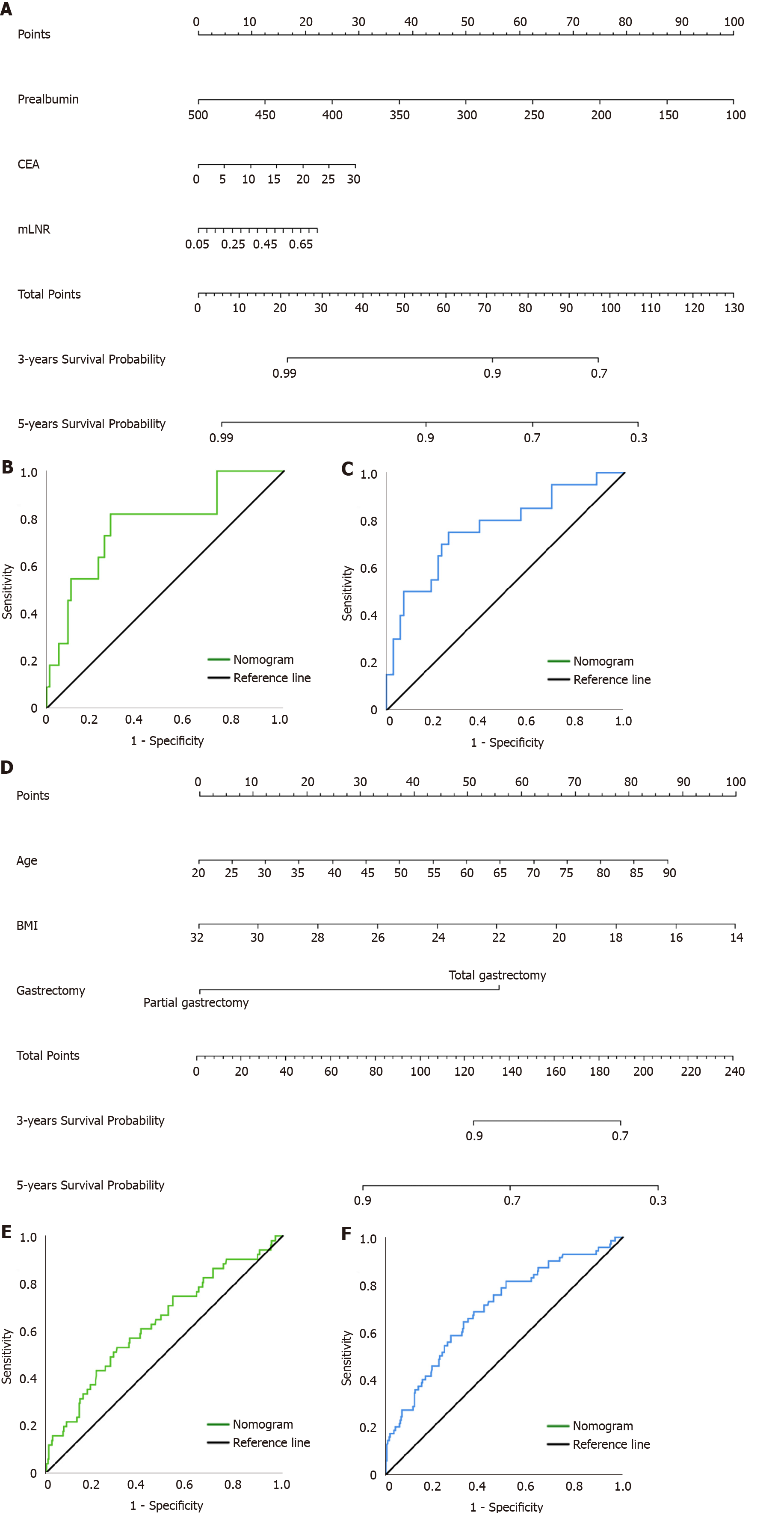Copyright
©The Author(s) 2022.
World J Gastrointest Surg. Feb 27, 2022; 14(2): 143-160
Published online Feb 27, 2022. doi: 10.4240/wjgs.v14.i2.143
Published online Feb 27, 2022. doi: 10.4240/wjgs.v14.i2.143
Figure 4 Nomogram models for predicting the survival of patients with pT1N2-3 and pT3N0 GC.
A: Nomogram model predicting the 3- and 5-year survival of patients with pT1N2-3 GC; B: Receiver operating characteristic curve (ROC) of the nomogram model for predicting the 3-year survival of patients with pT1N2-3 GC; C: ROC of the nomogram model for predicting the 5-year survival of patients with pT1N2-3 GC; D: Nomogram model for predicting the 3- and 5-year survival of patients with pT3N0 GC; E: ROC of the nomogram model for predicting the 3-year survival of patients with pT3N0 GC; F: ROC of the nomogram model for predicting the 5-year survival of patients with pT3N0 GC. CEA: Carcino-embryonic antigen; mLNR: Metastatic lymph node ratio; BMI: Body mass index.
- Citation: Wang YF, Yin X, Fang TY, Wang YM, Zhang DX, Zhang Y, Wang XB, Wang H, Xue YW. Nomograms predicting prognosis of patients with pathological stages T1N2-3 and T3N0 gastric cancer. World J Gastrointest Surg 2022; 14(2): 143-160
- URL: https://www.wjgnet.com/1948-9366/full/v14/i2/143.htm
- DOI: https://dx.doi.org/10.4240/wjgs.v14.i2.143









